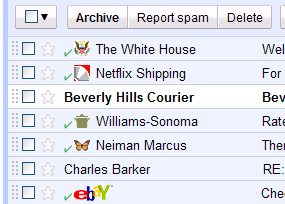Goodmail Systems has announced that it is ceasing operations.
Goodmail provides an email deliverability solution that also has an email marking component. Their business offers a three-part solution –
- An accreditation service in which the email sender is certified by Goodmail using standards determined by Goodmail, with agreement by email services such as AOL and Yahoo! that accredited email will be delivered.
- An authentication mechanism to verify that messages from Goodmail customers are legitimate.
- Inbox marking in which messages from Goodmail customers are identified with a Goodmail mark in the inbox.
The fundamental value provided by Goodmail is the first step in this process – certifying the sender and the associated guaranteed delivery. As Laura Atkins observed in her Circle ID comment,
I think the real underlying problem was that most companies who are doing things well don’t need certification services.
Iconix has often been compared with Goodmail because both companies provide inbox marking. However, Iconix is vastly different from Goodmail. Iconix focuses on telling the recipient who sent the email – the email service itself makes the delivery decisions. Our view is that if you subscribe to a sender’s mailing list, you want to find the legitimate emails they send. Iconix marks the sender’s email with the sender’s own brand. The value proposition is simple – recipients can instantly find and trust messages they care about, and senders benefit through increased engagement.
Let’s compare the inbox experience. In a Goodmail inbox, Barack Obama, Netflix and eBay would all get the same goodness mark. Is that really very useful to consumers? It is a good anti-phishing indicator, but little more. Iconix also provides a good anti-phishing indicator. However, with Iconix, the sender is identified with their logo, making it easy for you to find the sender’s email.

Knowing a message is real is an important first step, but the real value – for the recipient and the sender – comes in instant identification of the sender via a logo. You can scan the list, quickly find the messages you value, and react accordingly. Everybody wins.
Marking emails with the sender’s logo improves the inbox experience. Know Who. No Doubt. eMail ID.
![]()
![]()



 Posted by iconixtruemark
Posted by iconixtruemark 